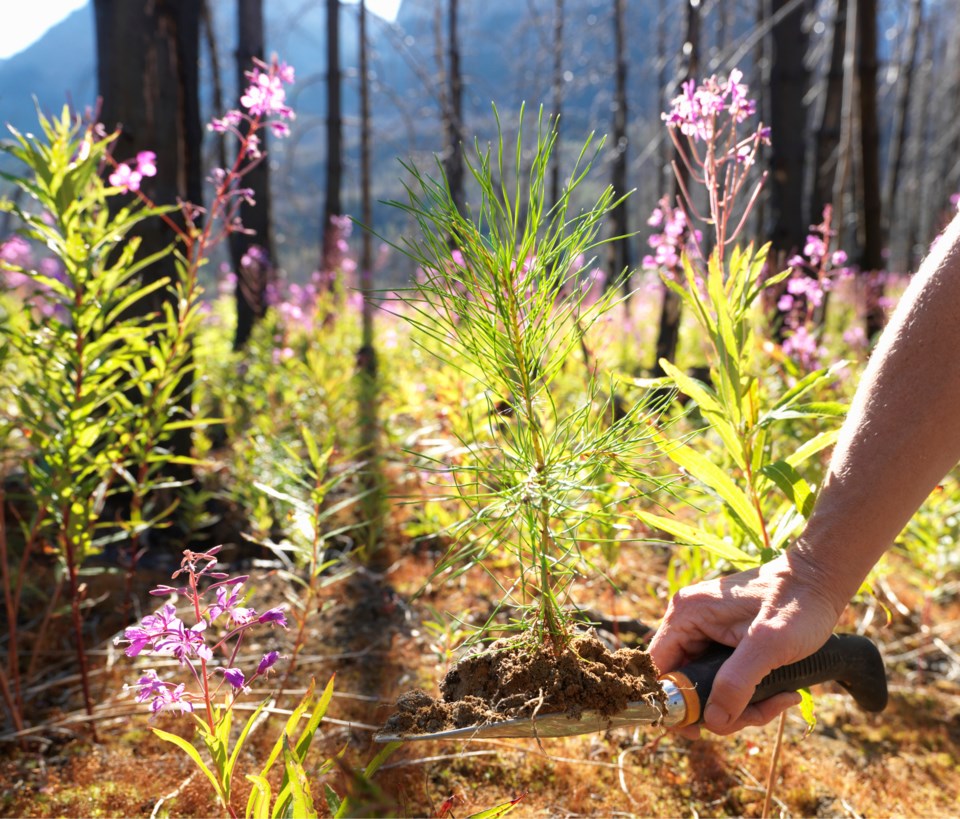One of the lasting legacies of the forest industry in Prince George won’t be jobs and community.
The industry is rapidly stripping us of that.
It will be the vast landscapes of monocrop pine plantations it has left in its wake, many of them sprayed with glyphosate or manually brushed to remove any tree or shrub with a fire-resistant, ungulate-feeding leaf on it.
These have kind of crept up on us without anyone noticing, apparently.
You won’t find a government report on the dwindling diversity of our regenerating forests since an obscure 2008 government report by the Forest and Range Enhancement Project, which recorded significant increases in monocultures since 1987.
I’ve treeplanted on and off over the past quarter century, so I’ve had a front-row seat to this insidious, seldom-reported arboreal simplification.
First of all, we didn’t plant only pine. We also planted Douglas fir and spruce, sometimes half the trees planted. But many didn’t take. Once we sprayed out the birch and aspen, under which Douglas fir and spruce can grow, we gave the upper hand to the pine. The pine took off, especially south and west of town.
If you drive down the Blackwater Road from Baldy Hughes to Quesnel, you’d be hard pressed to find recent cutblocks that are not overwhelmingly dominated by pine.
It wasn’t all pine before.
Despite the pine beetle lessons we should have learned, we have been busy reducing tree diversity to set ourselves up for even worse catastrophic failures in the future.
This head-shaking foolishness makes perfect sense when you understand the incentive structure.
You may have heard we plant seven species of conifer, but there is no requirement to do so. The requirement is for big companies to grow a “free growing” conifer plantation, and pine is the cheapest, quickest, and most reliable way to get there.
Aspen and birch patches, of course, are “weeds” and must be suppressed. This, despite reducing fire, despite holding off the pine to help other conifer, despite having up to 1000 per cent more understory forage for cattle on public range land. This, despite aspen having the carrying capacity to support exponentially more moose, deer, elk, beaver, birds, and insects.
The maximum deciduous forest allowed under every major Forest Stewardship Plan in the Central Interior is only five per cent of a cutblock.
This is the maximum. There is no minimum requirement to maintain so much as a single stem of aspen, cottonwood or birch. Not for a bird, not for a beaver. It can all get sprayed or brushed, to hell with the moose and cattle.
Surviving aspen on sprayed blocks are usually stunted by ongoing glyphosate contamination and no longer grow competitively.
The maximization of cutblocks with high-density, highly flammable pine was never about forest health or wildlife management. It was never about the future.
We did it to jack up the theoretical growth rate of our tree farms so we can justify the rates of clearcutting we are seeing today.
It’s a game of robbing Paul to pay Peter.
We’ve been defrauding our forests, our moose, our resilience, our tourism, hunters, trappers and ranchers, for a shallow mindset of short-term greed that is delivering not even the jobs that were promised us today.
This fraud is ongoing and its effects will only grow more deleterious with time.
James Steidle is a Prince George writer.



